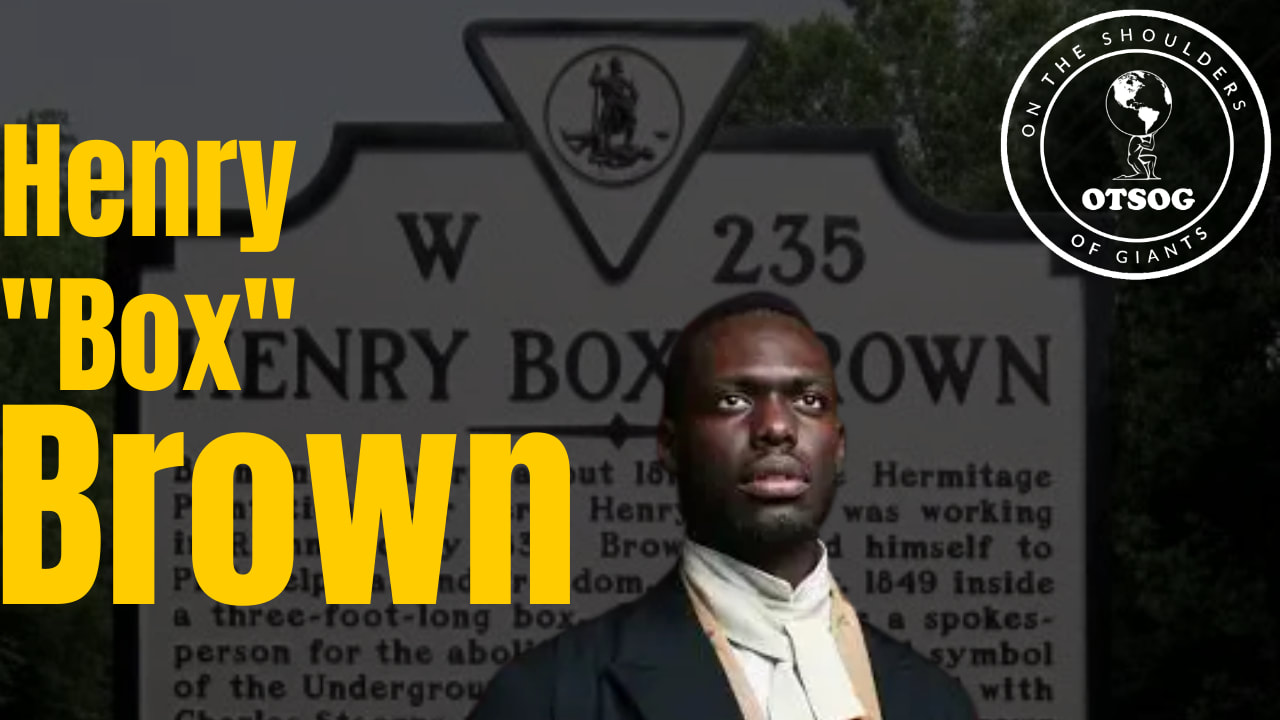|
This story begins at the Hermitage Plantation in Lousia County, Virginia. Henry Brown was born enslaved and his parents were also enslaved. I do not know much about his parents, but he did have four siblings. Brown was able to live with his family until the age of 15 after the death of the plantation owner John Barret. Brown’s family was separated and he was sent to live in Richmond, Virginia to work in a tobacco factory owned by William Barret, the son of John Barret. William did keep one of Brown’s sisters as his mistress. Let’s fast forward to the year 1836, Brown would marry a woman named Nancy who was also enslaved on a nearby plantation. Henry and Nancy Brown produced 3 children, and Henry was able to earn enough from the tobacco factory to support his family. He and his family lived in a house he rented, he also paid the owner of his wife to prevent him from selling her away. Around 1848, Nancy’s owner sold her while she was pregnant to a plantation in North Carolina. Brown was devastated that his wife was sold away from him, and sold while pregnant. He could no longer remain enslaved so he devised a plan to free himself. Brown recruited a free black man named James C.A. Smith and a white man named Samuel A. Smith, the three men planned to have Brown shipped in a box to a free state through the postal system. Samuel Smith consulted with members of the Pennsylvania Anti-Slavery Society and other anti-slavery supporters to create a network to have Brown shipped to a Quaker merchant. On the day of his escape in 1849, Brown burned his hand severely so he would have a legitimate excuse to not be at work, and to not be seen as attempting to escape. Later the two Smith men secured Brown into a small box with the label “dry goods” and “handle with care”, the box also had a small air hole for Brown to breathe. Inside the box, Brown carried water and a few biscuits to sustain himself. This method of escape was very risky, but as Brown stated in his biography, worth the risk. Brown was traveling from Richmond, Virginia to Philadelphia, Pennsylvania and the trip was very arduous, he was turned upside down for several hours of the trip. His escape nearly cost him his life. But once again, it was worth it. The box was handled very roughly on many occasions. Between the box being tossed around and Brown spending so much time on his head, the escape took a physical and mental toll on Brown’s mind and body. It took a total of 27 hours to ship the box from Virginia to Philadelphia. Brown's box a shipped by train, boat, and wagon, to the Philadelphia Vigilance Committee on March 30, 1849. The great William Still was a member of the Philadelphia Vigilance Committee and a contributor to Henry Brown gaining his freedom. Henry Brown had accomplished the unthinkable, he literally escaped from slavery in a box by mailing himself from Virginia to Philadelphia. The federal laws that protect mail being shipped across the country helped Broen earn his freedom, these laws also worried slave owners because literally, anything could be inside the packages being shipped across the country. Laws that Brown and the Smith men took advantage of. Following his new freedom, like many other blacks who escaped freedom, Brown became an advocate for the ending of slavery. He became a member of the Massachusetts Anti-Slavery Society and became acquainted with the legendary Frederick Douglass. As Brown's fame grew he was given the nickname “box” because of his daring escape from slavery in a box. Brown would go on the publish two versions of his autobiography titled Narrative of the Life of Henry Box Brown. Frederick Douglass was proud of Brown for his escape and success, but he was not fond of Brown revealing how he escaped in his autobiography. As a result, blacks who were escaping slavery were found and arrested. It is said that Brown had a chance to buy his wife’s freedom from the owner she was sold to but declined the offer. Brown along with one of the Smith men moved to England after the passing of the Fugitive Slave Act in 1850. Brown was able to tour England as a well-known public figure speaking out against slavery. As his fame waned he became an actor in a few plays and a magician as well. Brown would meet and marry a white woman named Mary Jane Floyd and they produced children. The Brown family would become a magical act and Brown would perform until his death in 1897. Henry Brown died at the age of 82 or 83, living a very eventful life. A life that he took control of despite being born into slavery. His breaking point was when his wife was sold away. He decided to free himself by being mailed to Philadelphia in a box. After freeing himself, he did use his voice and fame to advocate for the freedom of other enslaved black people. This is the story of Henry “Box” Brown. Thank you for listening. J.A. Ward Click here to support the OTSOG book series. References: https://www.biography.com/activist/henry-box-brown https://encyclopediavirginia.org/entries/brown-henry-box-1815-or-1816-1897/ https://en.wikipedia.org/wiki/Henry_Box_Brown
0 Comments
Leave a Reply. |
Details
Categories
All
Click Here to join our mailing list
|
Contact Us: |
Connect With Us |
Site powered by PIT Web Design


 RSS Feed
RSS Feed



